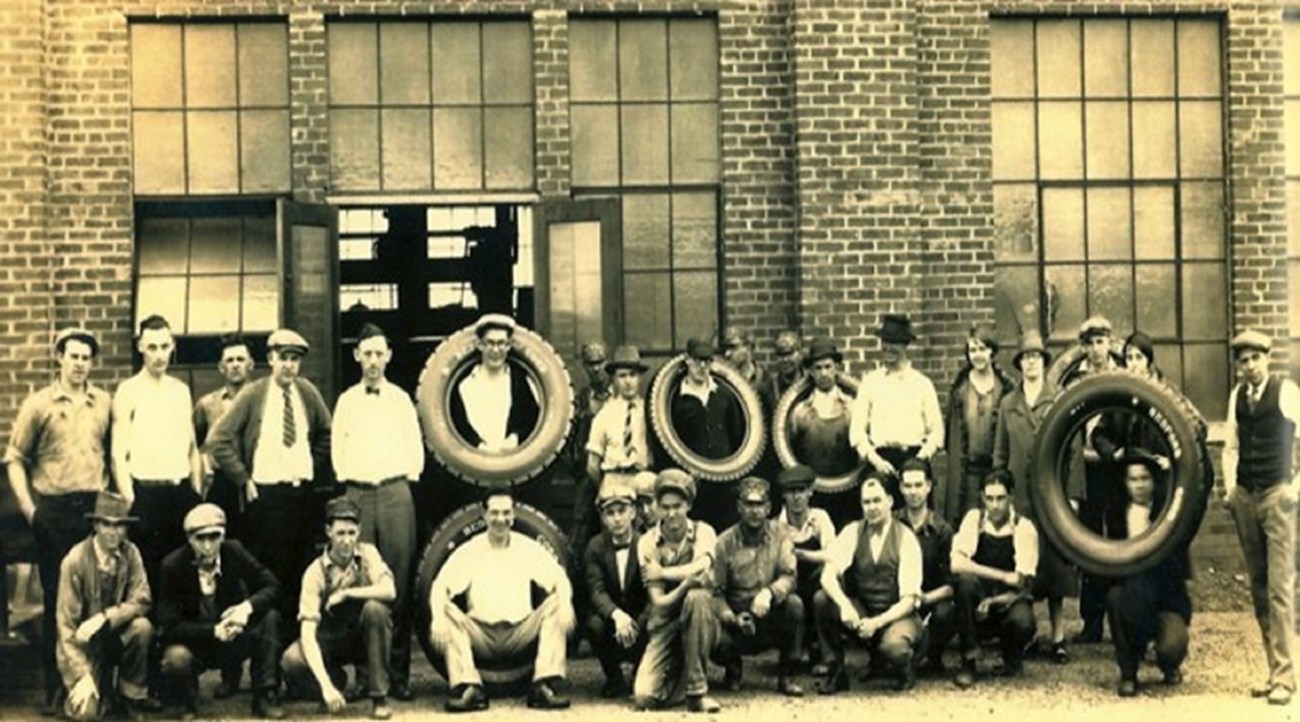Last updated: May 21, 2024
Article
Bedford County, Virginia

Bedford County
American World War II Heritage City
While Bedford County, Virginia is best known for its losses on Jun 6, 1944, during the invasion of Normandy, its role in World War II, and the impact of the war on the city of Bedford, goes well beyond one single day. From local families feeding American serviceman to manufacturing facilities producing vital military products to the troop trains that frequently passed through Bedford, World War II indelibly shaped the community.
Bedford County is one of the most productive agricultural areas in the state of Virginia and during WWII it flourished, keeping the home front supplied and helping feed the U.S. Military. Fruits and vegetables, notably apples, were grown in large quantities, and often preserved in local canneries set up during the war. Milk and eggs, pork and chicken, grains and soybeans all were produced in crucial amounts. Some of the agricultural work in Bedford County was accomplished by German prisoners of war. While the POW camps were located in adjacent counties, work crews from the camps frequently worked on Bedford County farms.
Although largely a rural area in the 1940s, Bedford did have significant industry, concentrated along the railroad line through town. Rubatex, a manufacturer of rubber products, produced crucial belts, hoses, parts for gas masks, and foam rubber used in flotation devices. Hampton Looms produced fabric for Army and Marine uniforms. Belding Hemingway, a silk and rayon plant, supplied material for parachutes and other applications. Piedmont Label, a printer and lithographer, was kept busy with military contracts and agricultural packaging. Lumber and pulpwood companies harvested wood from the forests around Bedford County for the war effort.
The citizens of Bedford County have a history of helping others and World War II was no exception. Bedford’s wartime volunteerism began even before the attack on Pearl Harbor on December 7, 1941, with a local drive to supply war clothing and weapons to war-torn Britain. Local 4-H chapters encouraged the growth of Victory Gardens. Veterans groups such as the American Legion and Veterans of Foreign Wars (VFW) staged campaigns to support service men and women with care packages and morale-boosting letters from home.
The residents of Bedford also actively sought to support the war effort financially. Numerous special fundraisers, parades, and rallies were held to encourage the purchase of war bonds and war stamps. Such efforts worked wonders: over the course of World War II, Bedford consistently exceeded assigned quotas for war bond sales by 65%.
Hundreds of Bedford residents, male and female, served in every branch of the U.S. Military and in most of the major battles of WWII. Twenty-three men from Bedford lost their lives in the Normandy Campaign. Twenty of these men, known as the "Bedford Boys", lost their lives on a single day, June 6, 1944, in the D-Day assault on Omaha Beach. This loss represented the largest known D-Day loss per capita of any town in the United States. In all one hundred thirty-seven Bedford men gave their lives during World War II.
Since the end of WWII, the citizens of Bedford County have worked to preserve the memory of those who fought in the war and gave their support on the home front. On the 10th Anniversary of the invasion of Normandy, Bedford erected the first known D-Day monument in the United States. The memorial, carved from stone taken from Normandy, stands at the Bedford Courthouse. Bedford is also the site of Virginia’s first Gold Star Families Monument, honoring all families who have lost a loved one in military service.
For visitors who want to learn more about Bedford's role in World War II, the City of Bedford is the home of the Bedford Boys Company A Tribute Center, a museum to the local Bedford men who took part in the invasion of Normandy, and the Bedford Museum which features exhibits on the military history of the community.
On June 6, 2001, the City of Bedford was designated by the United States Congress as the home of the National D-Day Memorial. The Memorial is the only place in the world that individually lists the names of all Allied personnel who died on June 6, 1944, during the invasion of Normandy. This was a groundbreaking research effort to recognize those who had fallen in service to their country and to preserve their memory. The Memorial also honors and celebrates the iconic Rosie the Riveters of WWII with a "Rosie Rose Garden" and a plaque to the indispensable service of American women on the home front. Visitors can take a special Homefront Tour through Bedford offered by the Memorial.
